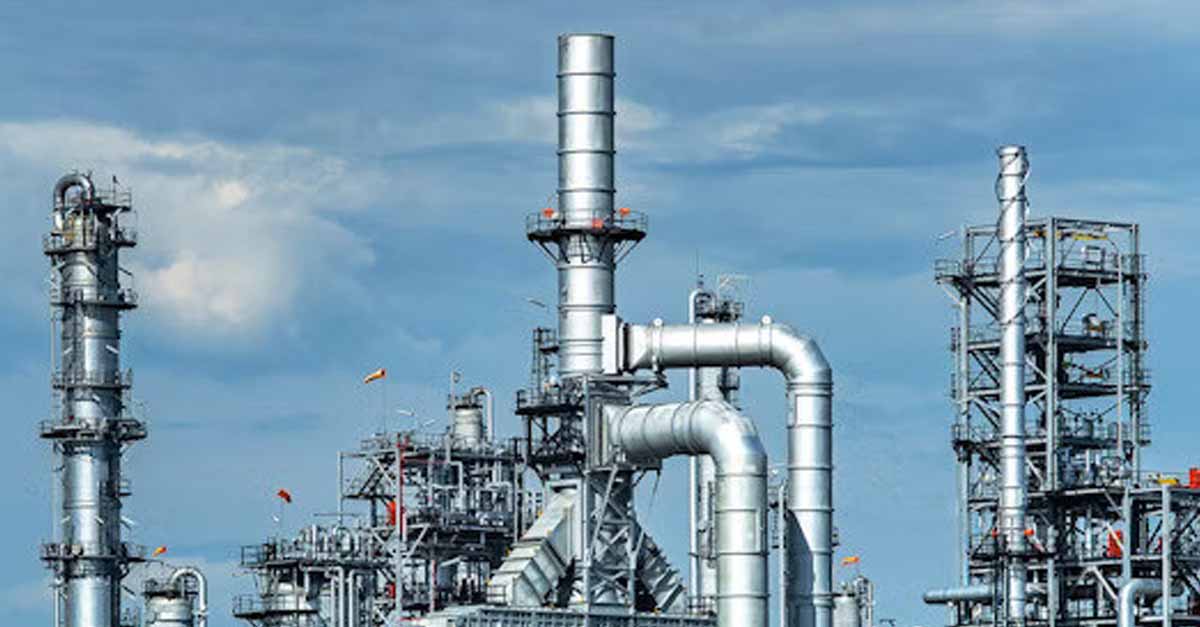
3 Elements of Maintenance Success in the Chemical Industry
How comprehensive asset intelligence, effective preventive maintenance, and efficient labor scheduling can lead to success in the chemical industry.
Solutions
Workplace Management Solutions
Real Estate Management Solutions
Maintenance Management Solutions
Energy Management Solutions
Engineering Document Management Solutions
Asset Management Solutions
Automate campus scheduling for classes, meetings, and exams with our EMS software.
Plan and manage conferences effortlessly with EMS software to impress guests and streamline operations.
Boost workplace flexibility and maximize space use with seamless desk and room booking.
Organize workplace or campus events smoothly, creating memorable experiences.
Optimize workspace, manage allocations efficiently, and reduce costs with our space management solutions.
Deliver projects on time and within budget by improving communication, collaboration, and efficiency with our software.
Streamline lease accounting for ASC 842, IFRS, and GASB compliance.
Manage leases efficiently by tracking key dates, analyzing costs, and ensuring compliance.
Centralize data and analytics for better insights, faster negotiations, and revenue growth.
Centralize facility and asset maintenance, automate work orders, and ensure compliance with our CMMS software.
Extend asset life, reduce downtime, and prevent costly repairs with data-driven monitoring.
Prevent equipment failures and extend asset life by detecting and addressing issues early.
Make sustainable, cost-efficient energy decisions by monitoring and optimizing power consumption.
Remotely monitor and control equipment with real-time data to predict issues, boost efficiency, and reduce downtime.
Easily share and collaborate on documents, creating a single source of truth for engineers and contractors.
Manage and analyze assets across their lifecycle to schedule maintenance, reduce downtime, and extend lifespan.
Improve visibility, automate work orders, and ensure compliance for efficient facility and asset management.
Resources
Browse our full library of resources all in one place, including webinars, whitepapers, podcast episodes, and more.
Support
Looking for access to technical support, best practices, helpful videos, or training tools? You’ve come to the right place.
About Accruent
Get the latest information on Accruent, our solutions, events, and the company at large.

Discover why food and beverage manufacturers experience asset downtime and learn strategies to overcome challenges and transform your processes.
In the fast-paced world of food and beverage manufacturing, time is a valuable commodity. The bustling manufacturing floor and constant hum of machinery are a testament to the relentless pursuit of quality and productivity. Yet when unexpected equipment breakdowns occur, it can all come to a grinding halt. In this article, we will explore some of the factors that can contribute to asset downtime, the negatives associated with unplanned interruptions, and some strategies that you can use to mitigate such challenges.
Causes of asset breakdown in the food and beverage industry generally fall into several categories, including:
When machine components succumb to breakdowns, the entire production line can be forced to the sidelines. Frequent breakdowns can lead to extended periods of unplanned downtime, resulting in substantial costs. According to research by Aberdeen, a single hour of machine downtime costs a company an average of $260,000, which does not even account for maintenance expenses.
Proactive strategies such as preventive maintenance involve performing routine maintenance tasks to ensure that assets are operating at peak efficiency and do not break down unexpectedly. However, when there are delays in routine maintenance, whether due to oversight or resource constraints, breakdowns can and do occur. This often results in more extensive repairs and longer periods of downtime.
Inefficient processes can contribute to asset downtime. For instance, poor resource allocation and production planning such as not planning the transition from one recipe to another, and inadequate training can contribute to extended periods of downtime.
Given the growing labor shortage, maintenance departments can hardly afford added challenges stemming from inefficiencies. In fact, according to the Plant Services annual PdM survey, some 9% of respondents reported that their organization’s maintenance department consisted of “Just Me,” while another 20% indicated that they were on a team of between 2 and 4 people.
When unexpected downtime does occur, it can negatively impact manufacturing processes throughout the organization. Some consequences of asset downtime include:
Unplanned asset downtime almost always results in production delays. This not only negatively impacts overall output but can disrupt supply chains and fulfillment schedules, potentially resulting in contractual penalties, a tarnished reputation, and jeopardizing relationships with distributors and suppliers.
Unplanned downtime directly translates into higher costs, such as emergency repairs, expedited shipping for replacement parts, and overtime pay for technicians. And these added expenses are not insignificant, with experts estimating that maintenance costs range between 15% and 40% of total production costs.
In the food and beverage industry, customer satisfaction is paramount. Unplanned downtime can lead to product shortages, delays, and issues with product quality, potentially leading to customer dissatisfaction and a loss of trust.
Fortunately, there are some proven strategies that food and beverage manufacturers can implement to reduce the likelihood of unplanned asset downtime.
Implementing proactive maintenance strategies, such as preventive and condition-based maintenance, can significantly reduce the likelihood of experiencing unplanned downtime. Preventive maintenance involves regular and scheduled inspections, routine cleaning, lubrication of moving parts, calibration of machines that rely on precision, periodic testing of equipment performance, and replacement of equipment components before they fail.
In addition to reducing the frequency of unplanned downtime, preventive maintenance can dramatically reduce repair costs. One survey conducted by Viking Analytics compared preventive maintenance to reactive maintenance and found that preventive maintenance can lower the cost of machinery repairs by as much as 40%.
Leveraging predictive analytics helps to identify potential issues before they escalate. The method involves analyzing historical data, monitoring equipment performance, and using predictive modeling to anticipate maintenance needs and address them proactively.
According to one report, the use of predictive analytics can help organizations to realize a tenfold return on investment, resulting in a savings of 30% to 40%.
Real-time asset monitoring involves utilizing sensors and IoT devices to collect data on equipment health, performance, and potential failure. Technicians can then perform maintenance tasks at more opportune times, such as during periods of low or no production.
The role that employee training plays in reducing unplanned downtime cannot be overstated. Routine training significantly reduces the likelihood of unplanned downtime in several ways. First, employees who are trained on the proper use of machines can correctly operate, maintain, and troubleshoot equipment. They can identify potential issues early on and take preventive measures.
Second, training in maintenance procedures ensures that employees know how to perform routine inspections and maintenance tasks. Third, training fosters a culture of continuous improvement. This encourages employees to actively seek ways to optimize processes and minimize downtime.
Leveraging innovative solutions that enable proactive maintenance strategies and data-driven decision-making can significantly reduce unplanned asset downtime. Here are a few examples of how technology can help reduce asset downtime:
For food and beverage manufacturers, managing unplanned downtime is an ongoing and dynamic challenge. By understanding the factors that contribute to downtime and acknowledging the negatives associated with it, organizations can chart a course toward proactive solutions. Embracing strategies such as proactive maintenance, predictive analytics, and real-time monitoring not only mitigates the risks of downtime but also fosters a culture of efficiency, reliability, and resilience within the industry.
Accruent is a leading provider of innovative solutions that help food and beverage manufacturers mitigate unplanned downtime and get the most out of their assets. Maintenance Connection is an industry-leading CMMS solution that makes it easy to implement proactive maintenance strategies, allowing food and beverage organizations to analyze, manage, and track their assets throughout all stages of the lifecycle.
Observe is an IoT remote monitoring software solution that can connect, monitor, predict, and control multiple equipment types to help your organization improve maintenance processes and even energy efficiency.
Want to discover more about how our solutions can help your organization to dramatically reduce unplanned downtime? Visit the Maintenance Connection and Observe product pages to learn more. For more information and to request a demo, get in touch via our website.
Discover why food and beverage manufacturers experience asset downtime and learn strategies to overcome challenges and transform your processes.
How comprehensive asset intelligence, effective preventive maintenance, and efficient labor scheduling can lead to success in the chemical industry.
Explore Accruent's guide to preventive maintenance in food services. Discover effective strategies to improve efficiency and lower operational costs.
What maintenance strategy -- or combination of strategies -- will work most effectively for your organization? Here are the key differences and ...
Subscribe to stay up to date with our latest news, resources and best practices.
* To unsubscribe at any time, please use the “Unsubscribe” link included in the footer of our emails.